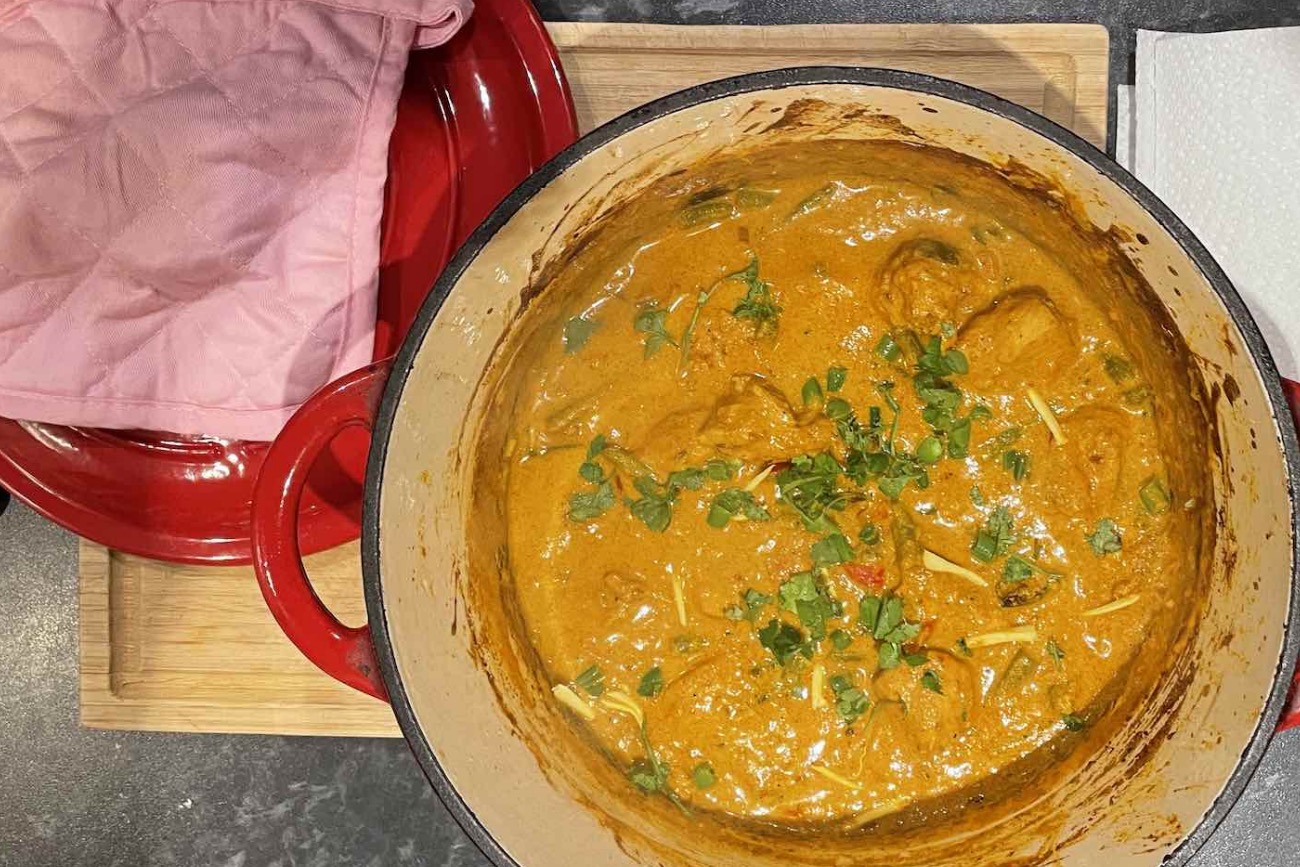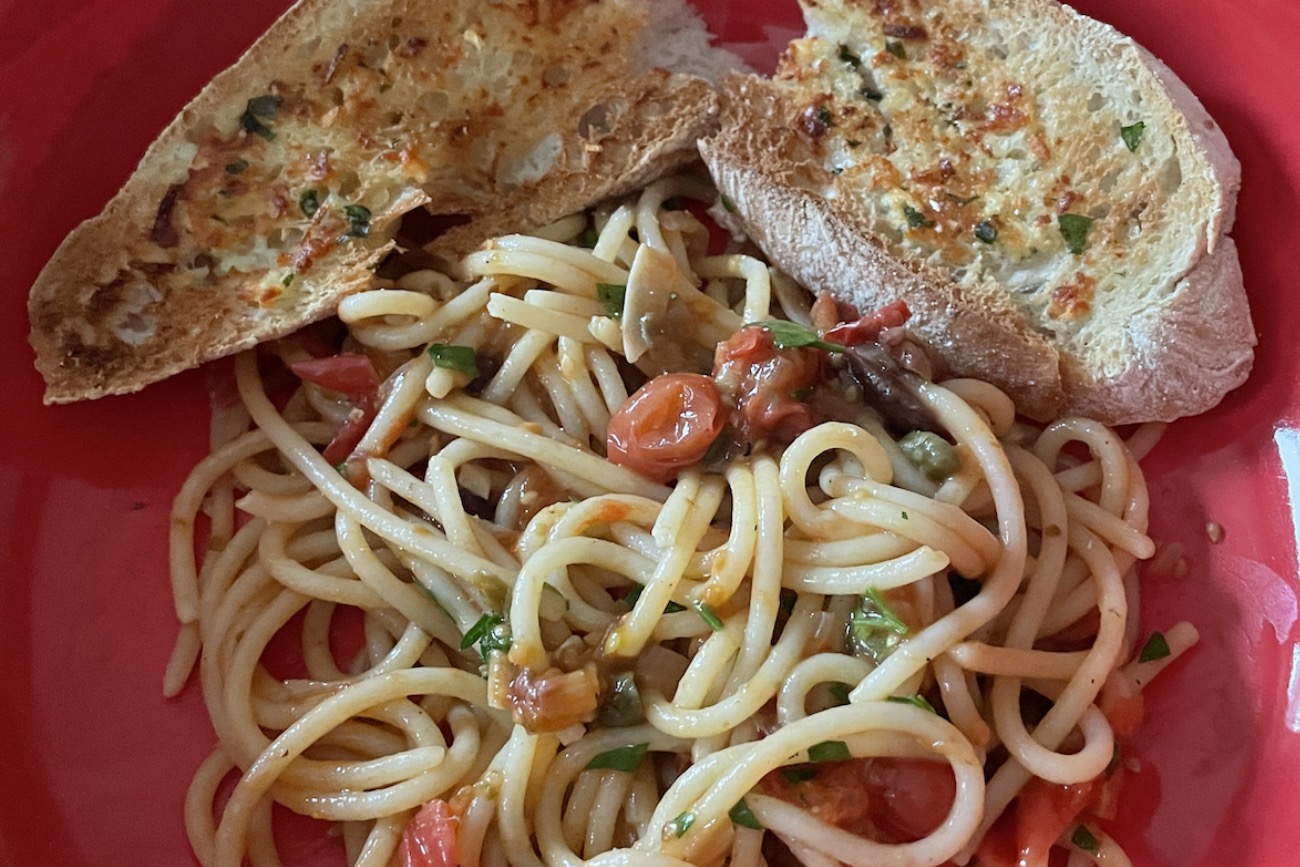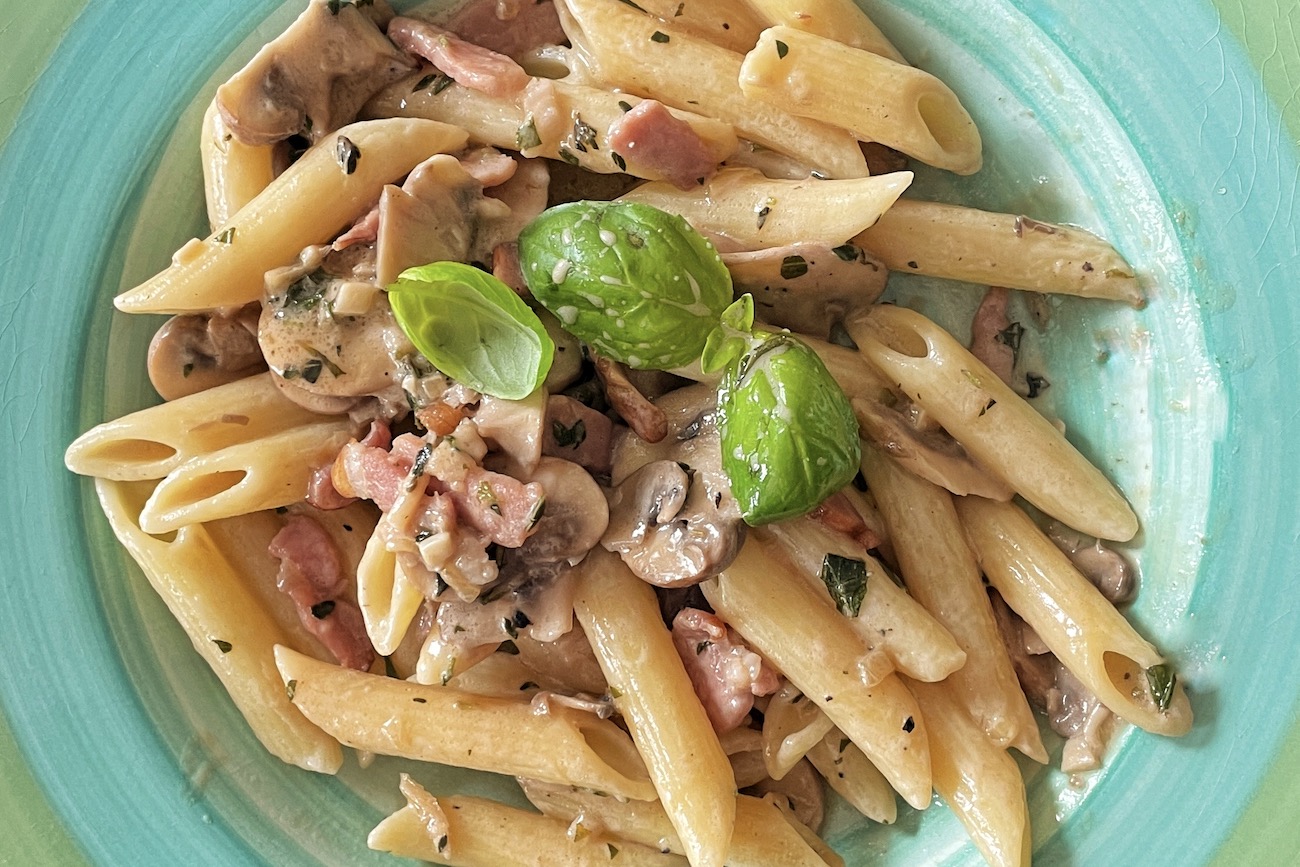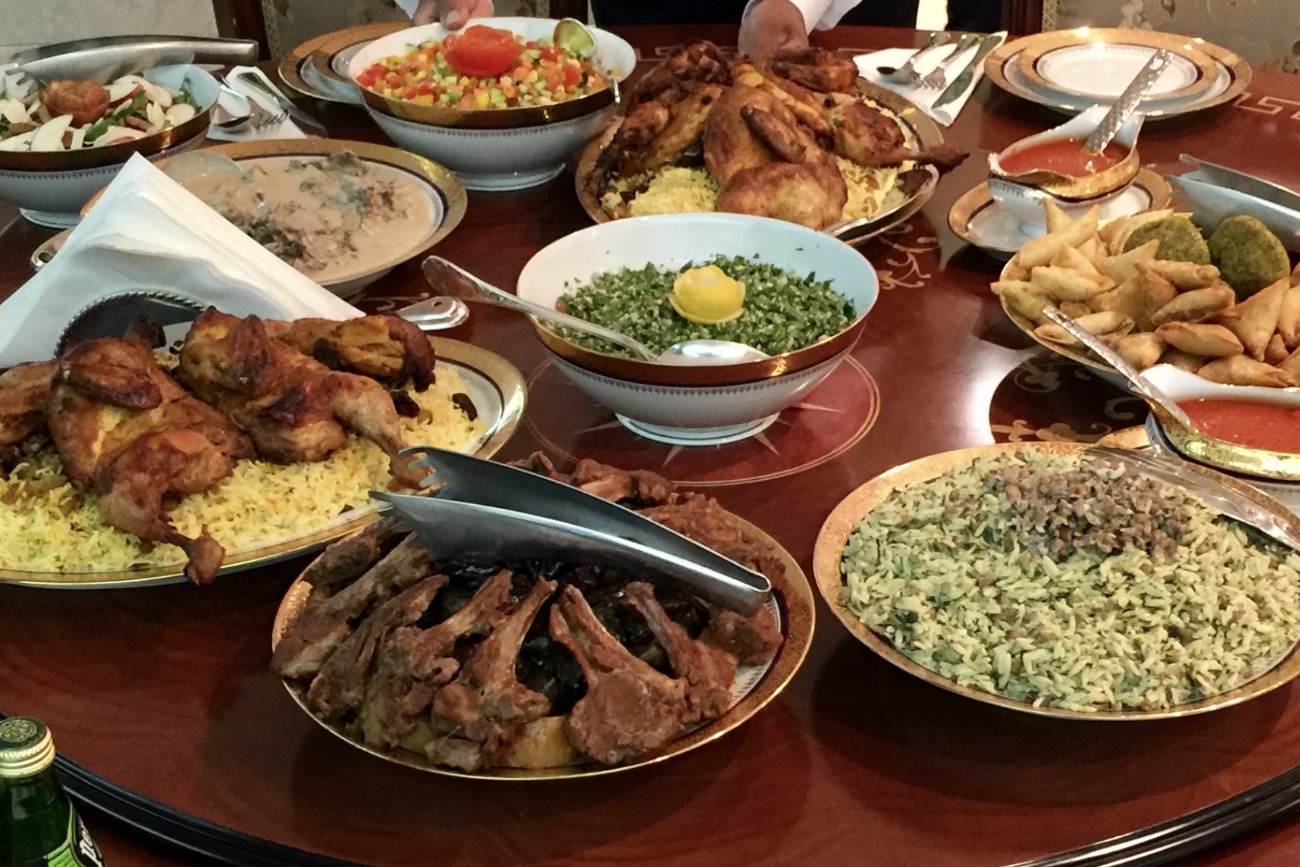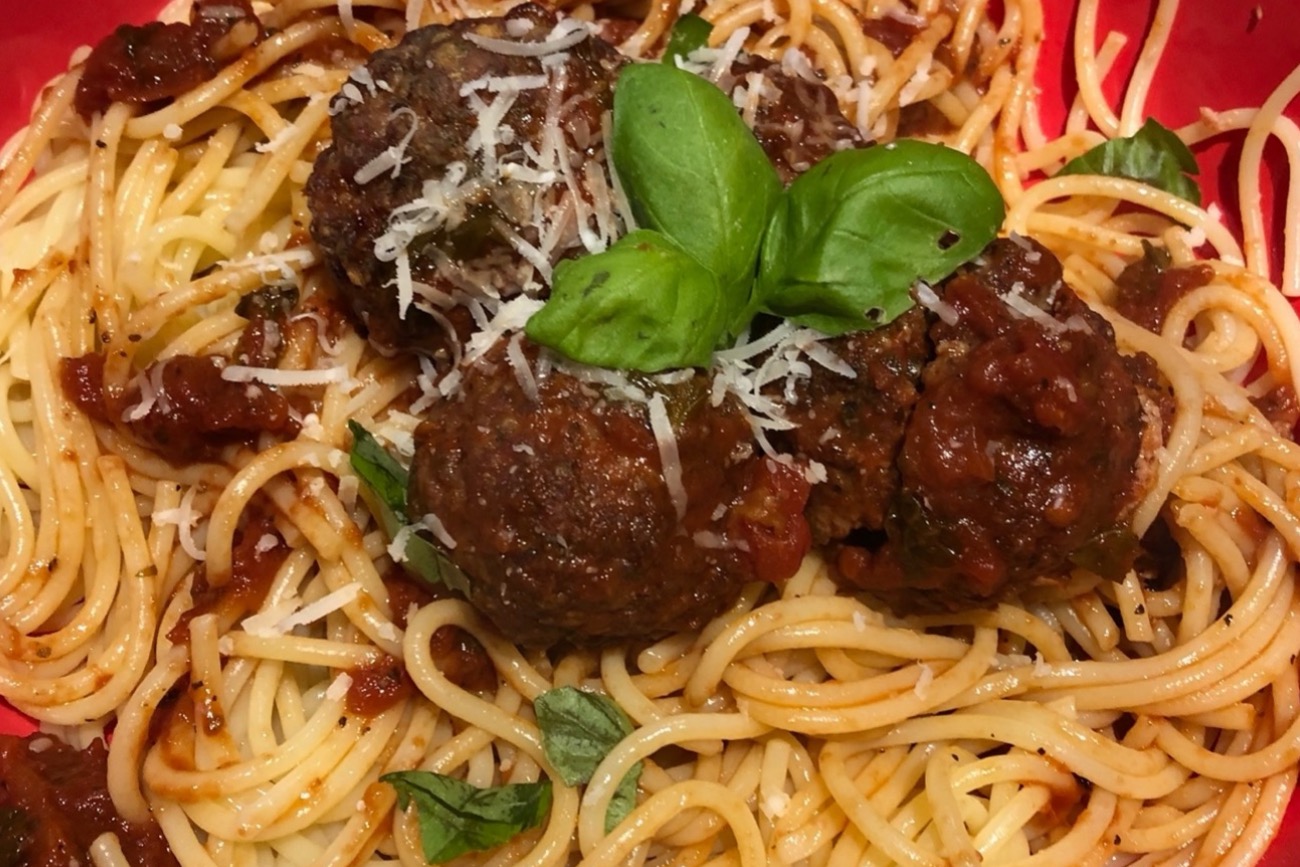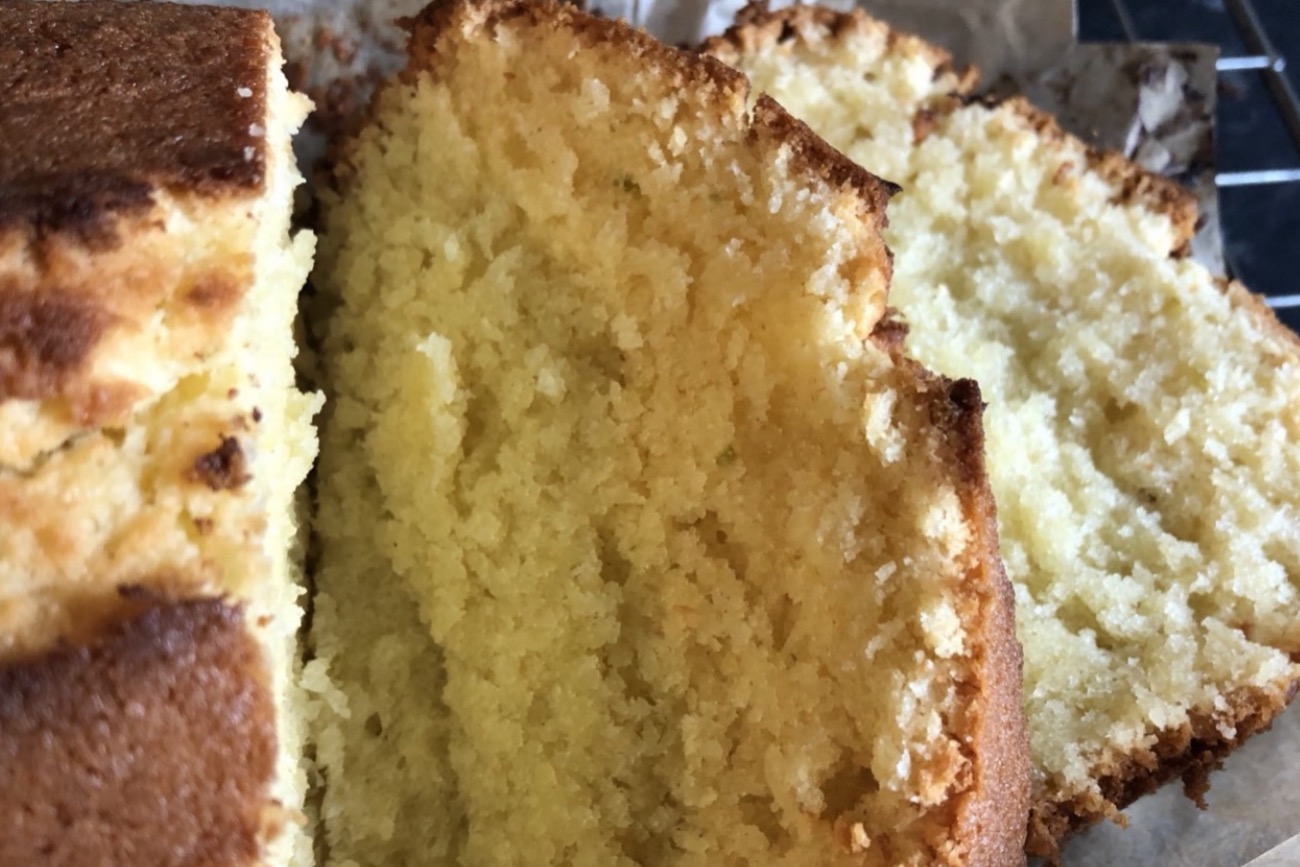I was given this recipe by a weathered old sailor whilst on a trip to the verdant Caribbean isle of Antigua. I love Caribbean cooking, with it’s eclectic influences from Africa, the India sub-continent and Europe. This particular curry is quite easy to cook and it’s versatile enough to substitute with goat, lamb, beef or chicken, or if you’re vegetarian try it with chunky cut vegetables or tofu.
I’ve slightly modified the recipe that was written, literally, on the back of a napkin to replace ingredients to easy to buy outside major cities like London. I’ve also added peppers, white wine and the Henderson’s Relish (or Worcestershire Sauce if you can’t get “Hendo’s”).
Keep adding small amounts of warm (boiled and cooled) water as the sauce cooks to get the right consistency you want, just don’t “over water” it as that will make it too runny. The starch from the potato will thicken the sauce as it cooks. If the sauce is too runny, just leave the lid off the pan for a while until it reduces slightly.
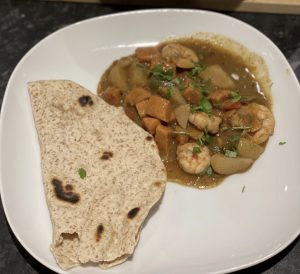 The original recipe used three (yes that’s 3!) Scotch Bonnet Chillies and was very, very hot. I just use one of the birds eye chillis you can buy in all supermarkets and find one small chilli (about 5cms long) with seeds is sufficient for my taste as there’s also heat in the Jerk anyway. If you’re not one for spicy food, add half a chilli without seeds, let it infuse for five minutes and then taste. Keep adding until you get the right level of heat but just allow for the heat increasing as the infusion continues.
The original recipe used three (yes that’s 3!) Scotch Bonnet Chillies and was very, very hot. I just use one of the birds eye chillis you can buy in all supermarkets and find one small chilli (about 5cms long) with seeds is sufficient for my taste as there’s also heat in the Jerk anyway. If you’re not one for spicy food, add half a chilli without seeds, let it infuse for five minutes and then taste. Keep adding until you get the right level of heat but just allow for the heat increasing as the infusion continues.
I prefer to keep this simple and serve with homemade roti or other flatbreads. If you prefer rice, this also goes well, and to get keep Antiguan vibe cook with a splash of coconut milk and with a few beans.
So, tie up your apron, put on some reggae (check out my favourite Spotify playlist) and get cooking and you’ll soon almost believe you’re in the Caribbean.
A Quick Request
To be one of the first to receive more of my recipes from around the world, and to support my site, please subscribe.
INGREDIENTS
The following ingredients should make enough for two large portions, with maybe a little leftover which you can freeze for another day. Just proportionately increase all ingredients to serve more dinner guests.
- 1 red onion, finely chopped
- Generous splash of ground nut, vegetable or sunflower oil
- 2 tbsp Jerk Curry Paste (see below for homemade paste)
- 1 red chilli with seeds
- 1 small Sweet Potato, peeled and diced into 1cm chunks
- 2 small Potatoes, peeled and diced into 1cm chunks
- ½ Red Pepper
- ½ Green Pepper
- ¼ Teaspoon of Ground Allspice
- 200g of Coconut Cream (or 400g of Coconut Milk)
- 100ml of Vegetable Stock
- Splash of Henderson’s Relish (or Worcestershire Sauce)
- Ground Black Pepper to season as desired
- ½ small glass of white wine
- Juice from 1/2 lime
- Frozen king prawns (defrosted and marinated overnight in jerk seasoning, lime juice & garlic)
- Plain or Greek Yoghurt as an accompaniment
- Fresh coriander, chopped for garnish
Method
MAKING A Caribbean JERK CURRY PASTE
If you don’t have Jerk Curry paste but do have some jerk seasoning in your cupboard, you can easily make your own paste. Unlike Jerk Paste bought in a jar from the supermarket, the powdered jerk seasoning lasts for a long time. Simply add a couple of teaspoons of jerk seasoning into a small pot, add a teaspoon of ground nut or olive oil and one crushed garlic clove. Mix into a paste with a teaspoon, adding dribbles of luke-warm water as necessary to get the right consistency, which should be a creamy paste that doesn’t run off the spoon.
Making the Delicious Antiguan Curry Sauce
Add a generous splash of oil to a hot skillet, deep drying pan or, as I do, a wok. Once the oil is at temperature (it should start smoking a little) add the onions and gently fry for five minutes. Don’t let the onions burn or dry out, you want them soft and starting to brown.
generousAdd the sweet potato and potato cubes together with the curry paste, chilli and the allspice and then fry on a medium heat for a further 5 minutes. Stir regularly to prevent the mixture sticking to the pan (you can add a little more oil if the mix dries out too quickly).
Add a splash of white wine whilst the pan is hot and let it sizzle and mostly boil away. Season with a little ground pepper. If there’s no sizzle, you’re broiling the vegetables not frying them, so turn up the heat a little.
When the potato starts to brown, turn down the heat and carefully add the coconut cream, vegetable stock, peppers and thyme. I add a generous splash of Henderson’s Relish at this point (Hendo’s is a much tastier alternative to plain old Worcestershire sauce, but use the latter if Hendo’s isn’t available where you are). Finally season with a little ground black pepper. There’s no need to add salt as the jerk paste has all the salt this dish needs.
Bring the sauce to the boil, then turn the heat down, cover the pan and gently simmer for another 20 minutes until your potato is soft when pressed with a fork, stirring occasionally. If the mixture is too wet, take off the lid for a little while. If it is too dry and sticking to the pan, carefully add a little boiled water and stir until you get the right consistency.
Once cooked, you can mash a few of the potato and sweet potato pieces with a fork to add a little more starch and thicken up the sauce if needed.
At this point, if you want to save the sauce for later or freeze some of it, you can do so. Only add the prawns if you’re serving right away.
If you’re eating it now (why wouldn’t you want to!) then add the prawns and stir carefully so they are coated in the sauce. Simmer gently for a further 5-7 minutes or until the prawns are pink (don’t over-cook the prawns as they’ll become tough and flavourless). I prefer to use fresh prawns as the frozen ones tend to shrink and become tough when cooked.
Serve in the pan, with a garnish of fresh coriander. Accompany with plain or Greek yoghurt (perhaps with a splash of olive oil, a little chopped or crushed cucumber and some mint) and roti* (see below), or come coconut infused rice if you prefer.
*How to Make the Roti
Roti are basically flat-breads. To make them simply add 2 cups of self-raising flower and 1 cup of wholemeal flour to a large bowl. Add 2 teaspoons of oil (olive, sunflower or vegetable) and gradually add ½ cup of warm water, mixing with a spoon while you go. You can also add 1/2 teaspoon of salt if you like, but it’s healthier without.
Once the mixture comes together, knead for about 5-8 minutes and slowly bring the mixture together into a ball – time to get your hands messy! If the dough is too sticky, add more wholemeal flower a little at a time until you can shape the ball in your hands without it sticking. If it’s too dry and crumbly, carefully add a little more water. You’ll know when the consistency is right as you should be able to roll it out onto a worktop without the need for more dusting flour to stop it sticking to the rolling pin.
Cover the dough ball in a damp cloth and leave to rest for 5 minutes.
Then roll the dough into a big circle about 3-4mm thick. Then spread a teaspoon of oil across the surface of your dough and roll it into a large sausage shape. Cover with a damp cloth and leave to rest for a further 10 minutes or until you’re ready to cook.
To cook, heat a skillet or large frying pan until it smokes a little. Cut your sausage into sections each about 5 cms long. Roll out each section into a small circle, the thinner the better but not so think it easily tears.
Carefully place one of the dough circles into the pan, move it around with your fingers so it doesn’t stick and then cook for a couple of minutes. Lift an edge of the roti to check that it’s browning nicely and then flip it over. Place a dab of butter on top and then cook for a further 2 minutes or until the underside is also starting to brown (but not quite burning). Wrap in tin foil to keep it warm and moist, and repeat for the other Rotis.
Tip: I always find, for some reason, the first roti is never as nice as the others. It’s as if the pan needs coating first. So just use a small piece of the dough to make a tiny roti and cook that first, moving it around the pan as it cooks. If it’s too dry, you can then just discard it and use the subsequent full sized rotis you make, or nibble on it if it did come out well after all.
-
An Epic Itinerary For The Arenal Volcano Costa Rica
“Welcome to Costa Rica. Take care on the riverbank, there is a very large crocodile, he visits us most days and
-
Costa Rica The Dazzling Land of Sunsets, Surf & Howler Monkeys
I’m in Costa Rica sitting astride a grey, salt-petrified driftwood log at the top of the golden beach. I run the
-
Stunning Tortuguero in Costa Rica – Rainforests, Condors & Turtles
Typical of Costa Rica, the Tortuguero rainforest reaches out to the horizon all around, a cloak of every shade of green
-
Debut Book Launch – Getting Away With It
I'm delighted to announce that my debut novel, Getting Away With It, is now available for purchase in Kindle and paperback
-
The Most Important iPhone Photo Hack You’ll Ever Need
/*! elementor - v3.16.0 - 20-09-2023 */ .elementor-heading-title{padding:0;margin:0;line-height:1}.elementor-widget-heading .elementor-heading-title[class*=elementor-size-]>a{color:inherit;font-size:inherit;line-height:inherit}.elementor-widget-heading .elementor-heading-title.elementor-size-small{font-size:15px}.elementor-widget-heading .elementor-heading-title.elementor-size-medium{font-size:19px}.elementor-widget-heading .elementor-heading-title.elementor-size-large{font-size:29px}.elementor-widget-heading .elementor-heading-title.elementor-size-xl{font-size:39px}.elementor-widget-heading .elementor-heading-title.elementor-size-xxl{font-size:59px} HOW TO REMOVE MOVING OBJECTS FROM iPHONE PHOTOS There’s nothing
-
Driving in South Africa and the Western Cape – How to Stay Safe
South Africa and the Western Cape is home for some of the most stunning driving routes in the world. Driving in
-
Where to Enjoy the Best Coffee in Cape Town
There aren't many things more enjoyable than sitting in a cafe drinking coffee. It's an even more pleasurable experience if the
-
Amazing Must Do Activities When Visiting Beautiful Antigua
The best activities, tours and things to do when visiting the Caribbean island of Antigua.
-
Lanzarote – A Stunning Easy Coastal Walk For Everyone To Enjoy
A stunning coastal walk that's easy to do for hikers of all abilities. Stroll along the rugged landscape of Lanzarote from
-
A Luxury Hotel On The Rugged, Beautiful Island Of Lanzarote
Hotel Fariones Puerto del Carmen - A highly recommended, stunning, luxury hotel on the Island of Lanzarote.
-
3 Amazing Days in Lisbon – A Travel Itinerary
Dreaming of exploring Lisbon but only have 3 days to spend? Here's my 3 Day Lisbon Itinerary to inspire you.“By day
-
Lisbon Walking Tour – Best Way To See Alfama Old Town in One Day
A Self-Guided Lisbon Walking Tour in Alfama Old Town This self-guided Lisbon Walking Tour begins at Praça Luís de Camões, a busy
-
Handling Birds of Prey at Fens Falconry in Cambridgeshire
We were on the hunt for birds of prey. Don't worry, we were just 'hunting' for a long established Falconry, where
-
How to Cook An Amazing Authentic Chicken Handi
If you love Indian food you'll be head over heels for this authentic Chicken Handi. I've adapted a recipe from the
-
The Best St Ives Mini-Break Itinerary
A guide to spending an amazing long weekend in St Ives in Cornwall including places to stay, where to eat, galleries
-
Spaghettoni Puttanasca Neapolitan Prostitute’s Pasta Recipe
This quick and easy pasta recipe is perfect for a hearty meal and also a romantic occasion. It’s been a while
-
Epic Lands of Ice and Fire – The Ultimate South Iceland Itinerary
This is an account of an epic adventure touring the South Iceland coast. Towering waterfalls, barren black deserts, cute puffins, hiking
-
A Local’s Top 10 Amazing Suffolk Coast Restaurants
As a resident of the area for over 21 years, here are my top 10 best mid-range restaurants along the coast
-
Iceland – Don’t Be Scared Flying During a Pandemic Is Easy
Flying During The Pandemic Flying overseas from the UK during the COVID-19 Pandemic can be concerning. I've just flown to Iceland (a
-
Reykjavik and Iceland On A Budget – Money Saving Tips
Iceland is a land of beauty. Verdant ravines, glowing blue glaciers, jet black beaches, spurting geysers and, it must be told,
-
Iceland – Video of the Land of Ice and Fire
In July 2021 I finally got to travel for the first time in almost two years following the Covid 19 pandemic
-
A Visit to Abbotsbury Sub-Tropical Garden Dorest
If the Garden of Eden was in England then it would be here on the Dorset coast, in Abbotsbury. Exotic plants
-
Stunning Coast Walk Hive Beach to West Bay Jurassic Coast Dorset
Dorset isn’t just lazing on beaches and promenading along Bournemouth beach. It's perfect for revitalising coastal walking. The county is latticed
-
Shoreditch Street Art, Street Food & an Eclectic Street Vibe
The West End is usually the first district people think of when it comes to London; famous for its historical buildings,
-
5 Of The Best Puerto Pollensa Restaurants Locals Recommend
Mallorca has exerted an alluring call to British sun-seekers for decades. Magaluf loving families mingle alongside ravers and partygoers, all acquiescent
-
Peak District Walks – Derwent Edge
The view from Derwent Edge in the Peak District envelopes you like a ghostly spirit, its rugged, craggy, spiritual beauty gratefully absorbs
-
10 Amazing Craft Beer & Real Ale Pubs in Sheffield
If you want to try some of the best upcoming craft beer brands in the country, look no further than the
-
Ipswich – Is This England’s Most Surprisingly Enjoyable Weekend Destination?
Discover a delightful and relaxing weekend destination that's only a short train ride from the din and hubbub of London. Unwind and recharge
-
Liguria – How to Hike the Stunning Coastal Route
Liguria has so much to offer. It's possible that Italian cuisine is the best in the world and Ligurian cooking is
-
Quick and Easy Italian Mushroom & Bacon Pasta Recipe
This quick and easy Italian dish makes a delicious lunch or starter, or you can increase the quantity of each ingredient
-
Yikes! How to Avoid Losing Your Apple Macbook at the Airport
"Sorry sir, but you'll have to leave that here," said the genuinely apologetic representative behind the Emirates check-in desk at Kuala
-
Inspirational Travel Books You’ll Love To Read
A selection of travel books, fictional and non-fictional, to inspire you to get travelling or to pass time on planes, trains
-
Suffolk Coastal Walks – Aldeburgh to Sizewell via Thorpeness
The pure sea breeze ruffles your hair and kisses your cheeks turning them into a deep crimson. Every breath you take, cleanses
-
Sheffield – 10 Hottest Things to Do in the Steel City
Sheffield is known as the Steel City, and though its industrial past undoubtedly made a critical contribution to the Industrial Revolution,
-
You’ll Love to Cook This Mouthwatering Delicious Antiguan Curry
I was given this recipe by a weathered old sailor whilst on a trip to the verdant Caribbean isle of Antigua.

-
Suffolk Coastal Walk from Walberswick to Southwold
It's difficult to beat the revitalising, relaxing seaside views of the peaceful Suffolk coast. An abundance of fauna and flora have
-
An Easy Hike Along Curbar Edge in the Peak District
Curbar Edge, in the Peak District National Park, is a wonderful, easy grade walk along well trodden and marked paths providing
-
Nice – Unlock the Cote D’Azur Blue Diamond
Take a relaxing stroll along Nice’s four-mile stretch of glorious, pedestrian-friendly promenade and soak up the gentle sea breeze blowing in
-
Flotilla Sailing in the Greek Islands
Early spring in a bay on Meganisi island, south Ionian Sea, and a single boat moors in the harbour. The vessel
-
Al Kabsa – Delicious Aromatic Arabian Rice Dish from Kuwait
Al Kabsa is the national dish of Saudi Arabia, but variations of it are common all across the Arab world. I
-
How I Got Hooked On Travel
Someone once asked me how I came to be so keen on travel. I guess, relatively speaking, I was a late starter. Before
-
Delicious Italian Meatballs in a Hot & Spicy Sauce You’ll Love
Traveling is about experiencing new things. Hidden sights, great architecture, history and, of course, discovering great food. When I lived in
-
How To Avoid Mobile Roaming Charges on Corfu
If you're from Britain visiting the beautiful Island of Corfu, it's easy to get stung by huge mobile data phone bills
-
Coconut, Lime & Rum Caribbean Cake – Easy to Make Recipe
The thought of not being able to travel during the Covid lockdown brings on inevitable feelings of frustration and sadness. I've
-
Getting a Bangladesh Visa The Easy Way
I've been to the wonderfully chaotic, noisy, colourful and fascinating Bangladesh on several, and can vouch that getting a visa can sometimes
-
Reduce Your Tax Bill – Join The National Trust
The National Trust provides a wealth of travel opportunities around the British Isles. If you’re a British resident and a tax
-
Kuwait City – A Desert State Worth Visiting?
I travelled to Kuwait City on business in the spring of 2015 and was determined to get to know the country















